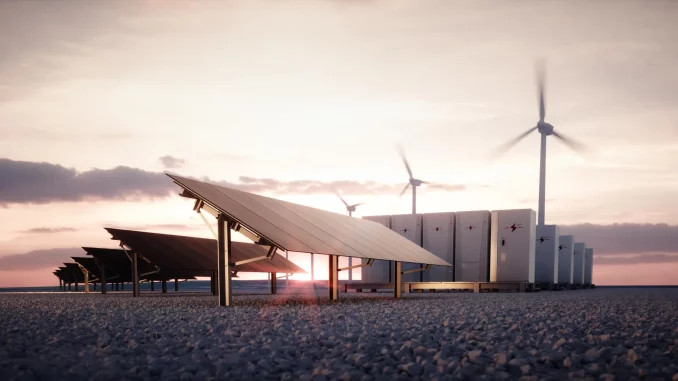
Introduction
In our quest for a sustainable future, energy storage plays a pivotal role. The development of next-generation batteries promises to be a game-changer in revolutionizing energy storage and efficiency. As we face global challenges like climate change and the transition to renewable energy sources, the need for more advanced, durable, and efficient energy storage solutions has never been more pressing. This article explores the exciting world of next-generation batteries and how they are poised to shape our energy landscape.
The Current State of Energy Storage
Batteries have come a long way since Alessandro Volta’s invention of the voltaic pile in 1800. Today, lithium-ion batteries dominate the market, powering everything from our smartphones to electric vehicles (EVs) and renewable energy systems. However, these batteries have their limitations, including limited capacity, degradation over time, and safety concerns. As our energy demands continue to grow and our reliance on renewable energy sources increases, it has become clear that we need something more advanced.
The Promise of Next-Generation Batteries
Next-generation batteries represent a significant leap forward in energy storage technology. They encompass a wide range of innovative approaches and materials, each with its unique set of advantages. Here are some of the most promising developments:
Solid-State Batteries: Solid-state batteries replace the liquid electrolyte found in traditional lithium-ion batteries with a solid material. This not only improves safety by reducing the risk of thermal runaway but also increases energy density, leading to longer-lasting and faster-charging batteries. Solid-state batteries are particularly promising for EVs and grid storage.
Lithium-Sulfur Batteries: Lithium-sulfur batteries have the potential to provide energy storage solutions with much higher energy densities than lithium-ion batteries. This can lead to longer electric vehicle ranges and more extended off-grid energy storage capabilities. Researchers are working on overcoming the challenges related to the degradation of sulfur cathodes to make these batteries commercially viable.
Sodium-Ion Batteries: Sodium-ion batteries are being explored as a more sustainable alternative to lithium-ion batteries. Sodium is abundant and less expensive than lithium, making it an attractive option for large-scale energy storage applications. These batteries have the potential to play a crucial role in grid stabilization and renewable energy integration.
Flow Batteries: Flow batteries are unique in that they store energy in tanks of liquid electrolytes. They offer the advantage of scalability, making them ideal for grid-level energy storage. Vanadium flow batteries, for example, are gaining traction due to their durability and long cycle life.
Benefits and Applications
Next-generation batteries offer several key benefits and have the potential to transform various industries:
Extended Lifespan: Improved durability and longer cycle life mean fewer replacements, reducing the environmental impact and costs associated with battery production and disposal.
Rapid Charging: Faster-charging capabilities will significantly enhance the convenience and practicality of electric vehicles, making them more accessible to consumers.
Energy Grid Optimization: Enhanced energy storage solutions can help utilities manage the variability of renewable energy sources more effectively, contributing to a cleaner and more stable electrical grid.
Environmental Impact: Using more sustainable materials, such as sodium and sulfur, can reduce the environmental impact of battery production and decrease our reliance on rare and costly resources like lithium.
Conclusion
Next-generation batteries represent a promising step forward in energy storage and efficiency, paving the way for a more sustainable and resilient energy future. As researchers continue to innovate and address the challenges associated with these emerging technologies, we can anticipate a world where electric vehicles can travel longer distances on a single charge, renewable energy sources are more seamlessly integrated into our grid, and our reliance on finite resources is reduced. The journey toward next-generation batteries is an exciting one, and the destination promises to be brighter and more sustainable for all.